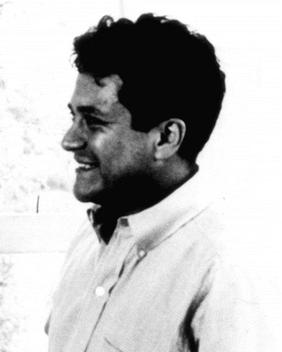Carlos Castaneda facts for kids
Quick facts for kids
Carlos Castañeda
|
|
|---|---|

Carlos Castañeda in 1962
|
|
| Born | Carlos César Salvador Arana December 25, 1925 Cajamarca, Peru |
| Died | April 27, 1998 (aged 72) Los Angeles, California, U.S. |
| Occupation | Author, anthropologist |
| Nationality | American |
| Education | UCLA (BA, PhD) |
| Subject | Anthropology, ethnography, shamanism |
Carlos Castañeda (born December 25, 1925 – died April 27, 1998) was an American writer. He became famous for a series of books that started with The Teachings of Don Juan in 1968. In these books, Castañeda wrote about his training in shamanism (a spiritual practice) with a wise man named don Juan Matus, who was a Yaqui Indian.
Castañeda's first three books—The Teachings of Don Juan: A Yaqui Way of Knowledge, A Separate Reality, and Journey to Ixtlan—were written while he was studying anthropology at the University of California, Los Angeles (UCLA). He said these books were true stories about his time learning from don Juan Matus, an Indigenous Yaqui man from Mexico. While these books were very popular, some people believed they were fictional stories rather than true accounts. Castañeda earned his college degrees based on the work described in these books.
By the time he passed away in 1998, Castañeda's books had sold over eight million copies and were available in 17 different languages.
Contents
Early Life
Carlos Castañeda was born Carlos César Salvador Arana on December 25, 1925, in Cajamarca, Peru. His parents were César Arana and Susana Castañeda. He moved to the United States in 1951 and became an American citizen on June 21, 1957.
His Books and Ideas
Castañeda's early books, like The Teachings of Don Juan: A Yaqui Way of Knowledge, were part of his studies at UCLA. In these books, he described his experiences learning from don Juan Matus, an Indigenous Yaqui man. Many readers loved these stories, but some scholars thought they might be made-up tales. Still, Castañeda received his bachelor's and doctoral degrees based on the work in these books.
In 1974, he released his fourth book, Tales of Power. This book described the end of his time learning with don Juan. Castañeda's books continued to be very popular, and he wrote more about his training with don Juan.
Castañeda wrote that don Juan saw him as the new nagual. This term meant he was a leader of a group of "seers" (people with special insights). Don Juan also used nagual to describe a part of understanding that is mysterious but can still be reached by people. Castañeda often called this mysterious area "nonordinary reality."
Even though Castañeda was a well-known writer, he rarely appeared in public. He was featured in a Time magazine article in 1973. The article called him "an enigma wrapped in a mystery." Castañeda preferred to keep his personal life private and did not like to share many details about himself. After that interview, he mostly stayed out of public view until the 1990s.
About Don Juan Matus
Many experts have discussed whether don Juan Matus was a real person or if Castañeda created him for his books. Castañeda's publisher listed his books as non-fiction, meaning they were supposed to be true. However, most critics now agree that the stories are largely, if not completely, fictional.
Some researchers, like Richard de Mille, believed that don Juan was not a real person. They pointed out that Castañeda's stories lacked certain details that would be expected in a true account of desert travel. Other research suggests that Castañeda might have been inspired by a real shaman (a spiritual healer) named Ramón Medina Silva, who was a Huichol mara'akame from Mexico.
Tensegrity
In the 1990s, Castañeda started appearing in public again to promote something called Tensegrity. This was described as a modern version of "magical passes." These were movements that ancient Indigenous shamans in Mexico supposedly used.
In 1995, Castañeda, along with Carol Tiggs, Florinda Donner-Grau, and Taisha Abelar, created a company called Cleargreen Incorporated. Their goal was to hold Tensegrity workshops, classes, and publish books about it.
Personal Life
Carlos Castañeda married Margaret Runyan in Mexico in 1960. This was mentioned in Runyan's own writings. They were married from 1960 to 1973.
Death
Carlos Castañeda passed away on April 27, 1998, in Los Angeles. He died from complications related to liver cancer. There was no public funeral, and his body was cremated. His death was not known to the public until almost two months later, when an obituary appeared in the Los Angeles Times newspaper.
Related Authors and Influence
- Octavio Paz, a famous poet and Nobel Prize winner, wrote the introduction for the Spanish version of The Teachings of Don Juan.
- George Lucas, the creator of Star Wars, has said that the characters Yoda and Luke Skywalker were partly inspired by don Juan and Castañeda.
- Amy Wallace wrote a book called Sorcerer's Apprentice: My Life with Carlos Castaneda, sharing her personal experiences with Castañeda and his followers.
See also
 In Spanish: Carlos Castaneda para niños
In Spanish: Carlos Castaneda para niños
- Neoshamanism
- New Age
- Peyote song

